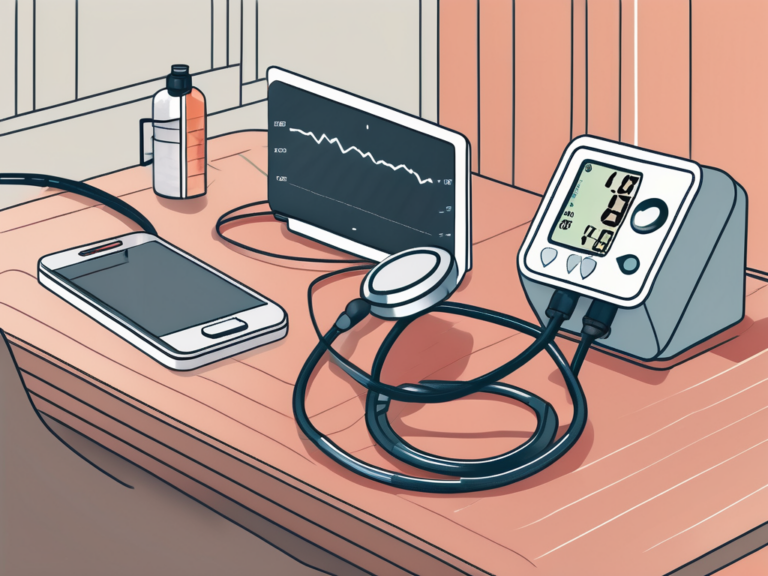Heart, Home and Sympathetic Nerves
The intricate relationship between our heart, home, and sympathetic nerves is a fascinating area of study that sheds light on the interconnectedness of our physical and emotional well-being. In this article, we will delve into the complexities of this intricate web, exploring the role of the sympathetic nervous system in heart function, the profound connection between stress and sympathetic nerves, and the metaphorical exploration of the heart as a home. We will also examine how our environment affects heart health, discuss lifestyle changes for a healthier heart, and contemplate the potential synergy between our heart and home for overall health and wellbeing. Lastly, we will explore emerging research in heart and nervous system health, offering a glimpse into the exciting future of this field.
Understanding the Sympathetic Nervous System
Before delving into the specifics of how sympathetic nerves influence heart function, it is vital to comprehend the broader context of the sympathetic nervous system. This branch of the autonomic nervous system plays a crucial role in our body’s stress response. When activated, it prepares our body for action, commonly known as the “fight or flight” response. The sympathetic nerves release norepinephrine, prompting various physiological changes to help us respond to perceived threats or challenges.
The sympathetic nervous system’s activation triggers an increase in heart rate, blood pressure, and respiration, diverting blood flow away from non-essential functions and towards our muscles, lungs, and brain. This response serves us well in acute situations, allowing us to mobilize our resources and respond to danger swiftly.
However, the sympathetic nervous system’s influence extends beyond the immediate stress response. Ongoing research has revealed intriguing connections between sympathetic nerves and various bodily functions, shedding light on the complexity of this intricate system.
The Role of Sympathetic Nerves in Heart Function
Within the heart itself, the sympathetic nerves play a vital role in regulating its rhythm and contractility. These nerves release norepinephrine, which binds to beta-adrenergic receptors on heart cells, increasing their excitability. This results in faster and stronger contractions, facilitating efficient blood pumping.
Furthermore, recent studies have uncovered additional nuances in the relationship between sympathetic nerves and heart function. It appears that sympathetic nerves also contribute to the heart’s ability to adapt to changing demands. For example, during exercise, sympathetic nerve activity increases, enabling the heart to pump more blood to meet the increased oxygen demands of the muscles. This dynamic interplay between sympathetic nerves and the heart highlights the intricate mechanisms at play in maintaining cardiovascular health.
However, prolonged sympathetic nervous system activation, as commonly experienced in chronic stress, can have detrimental effects on heart health. Research suggests that excessive sympathetic activity can contribute to the development and progression of cardiovascular diseases such as hypertension, heart failure, and arrhythmias. Therefore, understanding the delicate balance in sympathetic nerve activity is crucial for maintaining a healthy heart.
The Connection Between Stress and Sympathetic Nerves
The connection between stress and sympathetic nerves is a topic of great interest in both medical and psychological research. Chronic stress, whether due to work, personal relationships, or other external factors, can lead to persistent activation of the sympathetic nervous system. This can have profound physiological and psychological effects on our overall health, including the cardiovascular system.
Studies have shown that chronic stress can heighten sympathetic nerve activity, leading to sustained increases in heart rate and blood pressure. Over time, this can contribute to the development of cardiovascular conditions. Additionally, stress-induced sympathetic activation can negatively impact our emotional well-being, exacerbating feelings of anxiety and even depression.
While an important area of research, it is vital to approach stress management holistically, considering multifaceted strategies to promote overall wellbeing. Consultation with medical professionals or mental health experts can provide valuable guidance in managing stress and its impact on sympathetic nerves and heart health.
By unraveling the intricate workings of the sympathetic nervous system and its relationship with heart function, researchers are paving the way for new insights into cardiovascular health and stress management. The ongoing exploration of this fascinating field promises to shed further light on the complex interplay between our bodies, minds, and the world around us.
The Heart as a Home: A Metaphorical Exploration
Metaphorically, the heart has long been associated with the idea of home. As the center of our being, it holds our deepest emotions, shapes our personal identity, and nurtures our connections to others. Exploring the heart as a home allows us to delve deeper into the intertwining nature of our physical and emotional existence.
The Emotional Heart: Feelings and Physiology
Our emotions are intricately tied to our heart. When we experience joy, love, or sadness, we feel sensations in our chest, as if our heart is physically responding to our emotional states. This connection underscores the inseparability of our physical and emotional worlds.
From a physiological standpoint, recent studies have shed light on the complex relationship between our emotions and heart function. Researchers have found that positive emotions, such as gratitude and happiness, can lead to improved heart rate variability and better overall heart health.
On the other hand, negative emotions, such as stress, anger, or chronic loneliness, can have detrimental effects on our heart. These emotions can trigger sympathetic nervous system activation, leading to increased heart rate, blood pressure, and inflammation. It is essential to recognize this mind-heart connection and cultivate emotional well-being to promote optimal heart health.
The Heart’s Influence on Personal Identity
Our heart not only holds our emotions but also shapes our sense of self and personal identity. In literature and popular culture, the heart is often portrayed as the seat of our truest desires and deepest passions.
From a physiological perspective, the heart’s intricate network of neurons, known as the “heart-brain,” communicates with our brain, influencing our thoughts, behaviors, and perceptions. Research suggests that this complex network plays a significant role in intuition, decision-making, and our ability to connect with others on an empathetic level.
Therefore, nurturing our heart and aligning it with our values and aspirations is essential to cultivating a strong sense of personal identity and overall wellbeing.
Moreover, the heart’s influence extends beyond our individual identity. Just as a home is a place where we welcome others and build connections, our heart serves as a vessel for fostering meaningful relationships. It is through our heart that we form emotional bonds, experience empathy, and forge deep connections with others.
When we open our hearts to others, we create a sense of belonging and community. Just as a home is a sanctuary where we find solace and support, our heart becomes a safe haven for others to seek comfort and understanding. By embracing the heart as a home, we recognize the power it holds in shaping not only our personal identity but also our relationships with those around us.
The Interplay Between Heart and Home
Our environment has a profound impact on our physical and emotional health, including heart function. The interplay between our heart and home encompasses both the physical aspects of our living space and the broader social and psychological dimensions that shape our overall well-being.
When it comes to the physical aspects of our living space, there are several factors that can affect our heart health. For instance, poor air quality due to pollution can increase the risk of developing cardiovascular conditions. It is essential to ensure proper ventilation and filtration systems in our homes to minimize exposure to harmful pollutants. Additionally, noise pollution, such as traffic noise or loud neighbors, can contribute to stress and negatively impact heart health. Creating a peaceful and quiet environment within our homes can help promote relaxation and reduce the risk of heart-related issues.
Moreover, the broader social and psychological dimensions of our living environment also play a crucial role in heart health. The accessibility and availability of healthy foods in our communities greatly influence our dietary choices, which in turn impact our cardiovascular well-being. By fostering communities that prioritize access to fresh fruits, vegetables, and whole grains, we can empower individuals to make healthier food choices and support their heart health.
Additionally, the availability of spaces for physical activity within our communities is essential for maintaining a healthy heart. Access to parks, walking trails, and recreational facilities encourages individuals to engage in regular exercise, which can lower the risk of heart disease. By designing neighborhoods that promote physical activity and provide safe and inviting spaces for exercise, we can create environments that support heart health.
Furthermore, the social support systems within our communities also contribute to our heart health. Strong social connections and a sense of belonging have been linked to better cardiovascular outcomes. By fostering a sense of community and encouraging social interactions, we can create an environment that promotes emotional well-being and supports heart health.
The Heart-Home Connection: A Biopsychosocial Perspective
Taking a biopsychosocial approach to the heart-home connection allows us to appreciate the intricate interplay of biological, psychological, and social factors in shaping our heart health. Recognizing the multifaceted nature of this relationship highlights the importance of holistic approaches to heart care, such as integrating healthy lifestyle choices, supportive social networks, and stress management techniques into our daily lives.
From a biological perspective, our living environment can directly impact our cardiovascular system. Exposure to environmental toxins, such as secondhand smoke or chemicals found in household products, can have detrimental effects on heart health. By creating a home environment that is free from harmful substances and promoting awareness of potential hazards, we can safeguard our heart health.
Psychological factors, such as stress and emotional well-being, also play a significant role in heart health. Our homes should be a sanctuary where we can find solace and relaxation, allowing us to effectively manage stress. Incorporating elements of nature, such as indoor plants or natural light, can create a calming atmosphere that promotes emotional well-being and supports a healthy heart.
Lastly, the social aspects of our living environment are crucial for heart health. Supportive social networks provide emotional support, encouragement, and accountability, all of which can positively influence our lifestyle choices. By fostering connections within our communities and promoting a sense of belonging, we can create an environment that supports heart health on a social level.
Promoting Heart Health at Home
Within the walls of our homes, we have the power to create environments that support our heart health and overall well-being. Implementing simple lifestyle changes and fostering a heart-healthy home can make a significant difference in our long-term cardiovascular health.
Lifestyle Changes for a Healthier Heart
Adopting heart-healthy lifestyle habits is crucial for maintaining optimal cardiovascular health. Regular exercise, a balanced diet rich in fruits, vegetables, and whole grains, and avoiding tobacco use are essential components of a heart-healthy lifestyle.
But did you know that incorporating certain types of exercise into your routine can specifically benefit your heart? Aerobic exercises, such as brisk walking, jogging, or cycling, can help strengthen your heart muscle, improve blood flow, and lower blood pressure. Strength training exercises, on the other hand, can help build muscle mass and increase your metabolism, which can contribute to maintaining a healthy weight and reducing the risk of heart disease.
When it comes to a heart-healthy diet, it’s not just about what you eat but also how you prepare your meals. Opting for cooking methods like grilling, baking, or steaming instead of frying can help reduce the intake of unhealthy fats and lower the risk of heart-related issues. Additionally, incorporating heart-healthy ingredients like olive oil, nuts, and fatty fish into your meals can provide essential nutrients that support cardiovascular health.
Creating a Heart-Healthy Home Environment
Our home environment can play a significant role in supporting our heart health. Simple changes such as decluttering, creating spaces for relaxation, and incorporating plants into our living spaces can contribute to a soothing and stress-reducing atmosphere.
But did you know that the colors you choose for your home decor can also impact your heart health? Research suggests that certain colors, such as shades of blue and green, can have a calming effect on the mind and body, reducing stress levels and promoting a healthier heart. Consider adding touches of these colors through artwork, pillows, or even a fresh coat of paint to create a heart-healthy ambiance in your home.
Furthermore, the air quality in our homes can significantly affect our cardiovascular health. To improve indoor air quality, consider investing in air purifiers or incorporating natural air-purifying plants like snake plants, peace lilies, or spider plants. These plants not only add a touch of greenery to your space but also help filter out toxins and improve oxygen levels, promoting a healthier environment for your heart.
By consciously creating a heart-healthy home environment, we can nourish our hearts and minds, fostering a sense of calm and enhancing our overall well-being. So let’s make our homes a sanctuary that supports our heart health, one small change at a time.
The Future of Heart Health: Sympathetic Nerves and Beyond
The exploration of heart and nervous system health is a dynamic field, continuously uncovering new insights and potential avenues for improving our well-being. Exciting research initiatives are shedding light on the intricacies of heart-home synergy and offering glimpses into the future of heart health.
Emerging Research in Heart and Nervous System Health
Ongoing research is deepening our understanding of the connection between sympathetic nerves and heart function. Researchers are investigating novel therapeutic approaches that target the sympathetic nervous system to improve heart health outcomes. These studies hold promising prospects for the development of new treatment strategies.
For example, recent studies have shown that sympathetic nerves play a crucial role in regulating heart rate and blood pressure. By modulating the activity of these nerves, researchers are exploring the potential to prevent or treat conditions such as hypertension and arrhythmias. This groundbreaking research not only offers hope for individuals with heart conditions but also provides insights into the intricate interplay between our nervous system and cardiovascular health.
The Potential of Heart-Home Synergy for Health and Wellbeing
The exploration of heart-home synergy opens up a rich landscape of possibilities for promoting health and wellbeing. By recognizing and nurturing the interconnectedness between our heart and our living environments, we can forge a path towards holistic well-being.
Recent studies have highlighted the impact of our physical surroundings on heart health. Factors such as air quality, natural light exposure, and noise levels in our homes can significantly influence our cardiovascular well-being. By creating heart-healthy home environments, we can optimize our heart health and overall quality of life.
Future research will continue to unravel the intricate mechanisms underlying this synergy, potentially leading to innovative interventions that leverage the power of our homes to optimize heart health outcomes.
Furthermore, the concept of heart-home synergy extends beyond the physical environment. Emotional well-being and social connections also play a vital role in heart health. Research has shown that positive emotions, such as love, gratitude, and joy, can have a protective effect on the heart. Cultivating strong social support networks and engaging in activities that bring us happiness and fulfillment can contribute to a healthier heart.
In conclusion, the interplay between our heart, home, and sympathetic nerves is a captivating realm that intertwines our physical and emotional well-being. Understanding the role of sympathetic nerves in heart function and their connection to stress is crucial for maintaining cardiovascular health. Metaphorically exploring the heart as a home highlights the influence of emotions and personal identity on our heart’s well-being. Meanwhile, recognizing the impact of our environment on heart health emphasizes the importance of cultivating heart-healthy homes and communities. By engaging in lifestyle changes and creating heart-healthy home environments, we can take active steps towards promoting optimal heart health. As we look towards the future, ongoing research in heart and nervous system health offers exciting possibilities for further enhancing our understanding and improving heart health outcomes.






